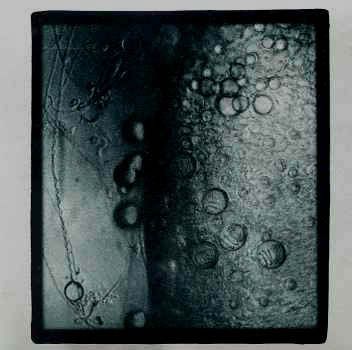

After the Flood was a recording project that featured an ever-changing rotation of contributors centering around producer Dale Lloyd. ATF informally began in 1989 as a series of basement recordings made between Lloyd and friends. ATF's self titled debut was later released on cassette in 1991 on Manna, a recording label founded by Caroline Davenport and Dale Lloyd which operated from 1990 to 1992. The first ATF release featured contributions from members of My Diva, Sage, Sky Cries Mary, The Blackouts, Biota, Forever And A Day, Agra Mecca, Control Freak, Maxine, Vertigo Bus, and Sound Color. In 1993, Clark Von Trotha and Lloyd formed the æ label and in 1995 the first ATF release was reissued, remixed and remastered on CD with newly recorded tracks replacing some of the original ones.
Following the success and warm reception of the first release, in 1996 work began on a second ATF entitled "After The Flood 2" which featured contributions from members of Cindytalk, Bowery Electric, Windy & Carl, Labradford, Climax Golden Twins, Lucid, My Diva, and artists Cyndia Pickering who (later changed her name to Sylvi Alli), Marc Olsen (Sage, Sky Cries Mary), Warren Defever (His Name Is Alive), Mark Holt (later changed name to Mark Wand - Sound Color, Trick Deck), Maxine and Steve Ball (League Of Crafty Guitarists).
ATF 2 was released in 1998 on the æ label in coordination with the World Domination label. Originally a contribution from Robert Fripp was included but removed at the last minute due to miscommunication and time constraints. After producing the release and making initial decisions regarding the cover art, Dale Lloyd relinquished further involvement due to a serious illness and was not able to oversee the final result of ATF2, therfore the following errors on the liner notes:
* Track 6 on disc one is titled "Perhaps Good, Not Understood" and was mistakenly omitted. Credits for track 6 are: Mark Taylor-Canfield - electronics; Dale Lloyd - tape and treatments; and Bowery Electric - drones. The tracks following "Perhaps Good..." are numbered accordingly.
* There are spelling errors for Stuart Arentzen, Cyndia Pickering, and Jeffery Taylor (who also should have been credited as being with the Climax Golden Twins).
Early in 1999, æ dissolved as a recording label, and there have been no further plans to produce a third ATF release.
After The Flood 2
(æ / World Domination) 1998
After The Flood
(æ) 1995
AQUARIUS RECORDS (July 1998)
"This surprisingly good album (ATF2) seems to have been produced by Dale Lloyd, who collaborates on most of the songs with guest artists such as Windy & Carl, Labradford, Gordon Sharp (of Cindytalk), etc. It's cohesive and consistently good in it's measured, layered, 'spacerock meets 4AD' sonic vibe. Reasonably priced for two discs (one instrumental, one with vocals) in such a lovely package, complete with lovely full color individual cards."
ALL MUSIC GUIDE
"Regardless of who exactly is behind After The Flood, or even if there's one chief person in particular coordinating everything, the debut album is a lovely piece of work, equivalent in it's own way to 4AD's This Mortal Coil and Hope Blister projects, or Projekt's Black Tape For A Blue Girl, in drawing together a variety of different performers under one umbrella to create a haunting, ambient-influenced final release. If nothing else, it could hardly have been conceived as a unified project unless somebody was extremely dedicated from the start --- recording dates given are from 1989 to 1994! The CD starts brilliantly with "It's All In The Sun", with Washington cult art/rock figure Maxine providing guitar and tape music while multi- instrumentalist Dale Lloyd, as close to being the lead figure on the album as anyone (and even he doesn't appear on all the songs), adds soft voice and further orchestrations to create a swirling, mysterious introduction to the album. Tracks range from brief acoustic fragments to more fully developed songs, some with fairly detailed arrangements and multiple instruments and/or singers, with everything
definitely pitched to the more shadowy side of things --- even the banjo on
"Abandoned Ship" sounds desolate in context, set against Lloyd's heavily delayed guitar work. The varied instrumentation cleverly links the album's mood to a number of traditions; the accordian on "Glissando" calls to mind downbeat French cabaret songs, while the keening vocals on "Morning Come, Bottle Dry" suggest everything from Yoko Ono to traditional cries of lament from many areas of the world. If anything, the chamber folk of such performers as Nick Drake and Tom Rapp could be considered the basic touchstones, but nothing on After The Flood is so easily reduced to such comparisons. Lovely and underappreciated, After The Flood is well worth investigating."
(Ned Raggett)
ALTERNATIVE PRESS (MARCH 1996)
"After The Flood are a loose collective of Seattle musicians, some of whom also contribute to Lucid. It's all too confusing to sort out all the players; suffice it to say that they share sensibilities and a liking for non-rock instruments like zither, accordian, clavinet, harpsichord, keymonica, etc. ATF are miniaturists, making songs as exquisitely crafted and downscaled as an architect's model of Byzantium. There's no propulsion to these 22 songs; they waft like expensive perfume in well appointed drawing rooms. At times the various male and female voices assume a Dead Can Dance-like overbearingness but the music consisitently satisfies with it's delicate shapeliness. ATF (and Lucid) sound at once ancient and fresh. I think I've heard the future of music... or did I dream it?" (Dave Segal)
OPUS ZINE (JANUARY 2001)
"I know absolutely nothing about the Aeterna label. All I know is that they put out some really good stuff. I’ve raved about Lucid—Baby Labrynthian and Idylls And The Secret Remain are two of the coolest albums I’ve ever heard, creating lo-fi minimalist ambient masterpieces. After The Flood takes the eerie otherworldliness of Lucid’s music, but makes it more musical and listenable. I only say that because I find After The Flood’s music much easier to listen to, much more readily apparent. Lucid’s music is obtuse and challenging. After The Flood seems almost “radio-friendly” by comparison. Members of Lucid do show up in After The Flood, which makes me wonder if this wasn’t some sort of collaboration.
On this album, After The Flood covers a lot of musical terrain, seemingly without any effort. “Glissando”, a duet between a guitar and an accordion, is something you’d listen while strolling through Paris, if the cafes along the Champs-Elysees was inhabited by ghosts. The same could be said for “Dispel The Nightmare”, except the location would be smoke-filled jazz clubs along the waterfront. “Terra, She Said” combines a loop of what sounds like glass bells shattering with sinister drones and factories working on overhead.
“Morning Come, Bottle Dry” is the most unsettling track on the disc. A tortured voice gasps out his last dying breaths, muttering somewhat incoherent phrases and babblings; it’s almost like an “easy-listening” version of Diamanda Galas’ “Schrei X.” “Come Back Smiling” could be right off of “It’ll End In Tears” or a Lycia album. “Spool” reminds me Gavin Bryars’ “The Last Days”, where sparse, apprehensive string arrangements create an air of anxiety and worry. The album ends with “Grace”, a pop song that Ivy would have been proud to write.
Like a Lucid album, the only way to do justice would be to describe each track on its own. But, like a Lucid album, there are a lot of tracks. Actually, 22 to be exact, spanning almost 70 minutes. The interesting thing is that the content of this album was recorded between 1989 and 1994. But all of the songs flow together so well, there’s an incredible coherence to it all. In other words, it’s hard to tell if the band went through phases during those 5 years - all of the songs have a very similar sound and quality to them all. And even with 22 tracks, there’s not really a single piece that’s terrible, or that I’d consider filler material in the extreme.
After The Flood generally takes up the mantle of This Mortal Coil, wedding
melancholy ethereal pieces with an odd, avant-garde slant. However, like This Mortal Coil, it’s hard to peg down After The Flood to one musical category. At times, they’re an ambient band, other times a pop band, and sometimes a gothic band (but without all of the pretentions). I also see some comparisons with a band like Black Tape For A Blue Girl, but far less theatrical and
pretentious. I only compare After The Flood with Lucid because they both share a similar musical ethic. But for a novice, I’d recommend After The Flood first.
I still don’t know anything about After The Flood, Lucid, or even the label they’re on. But that only adds to the mystery. However, perhaps it’s this mystery that makes me love their music so much." (Jason Morehead)





